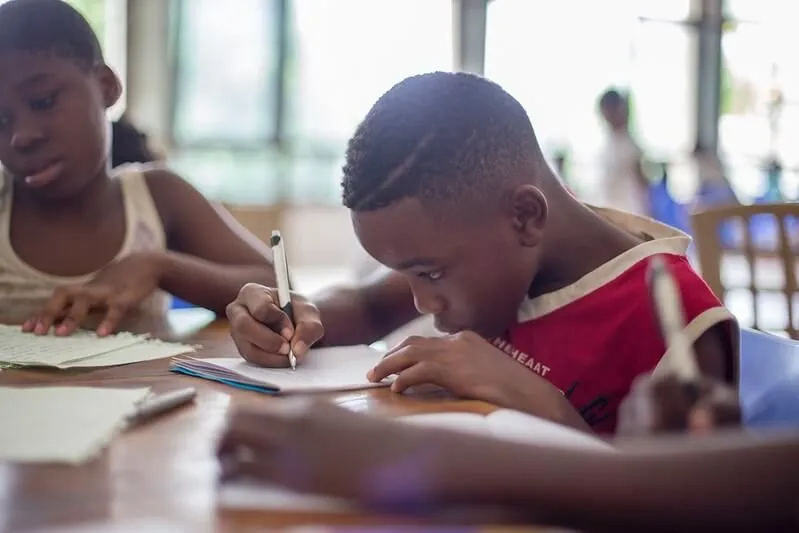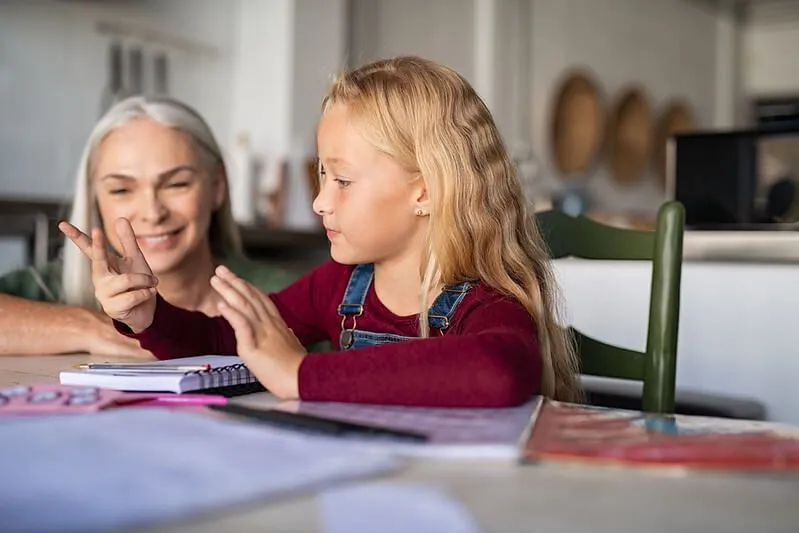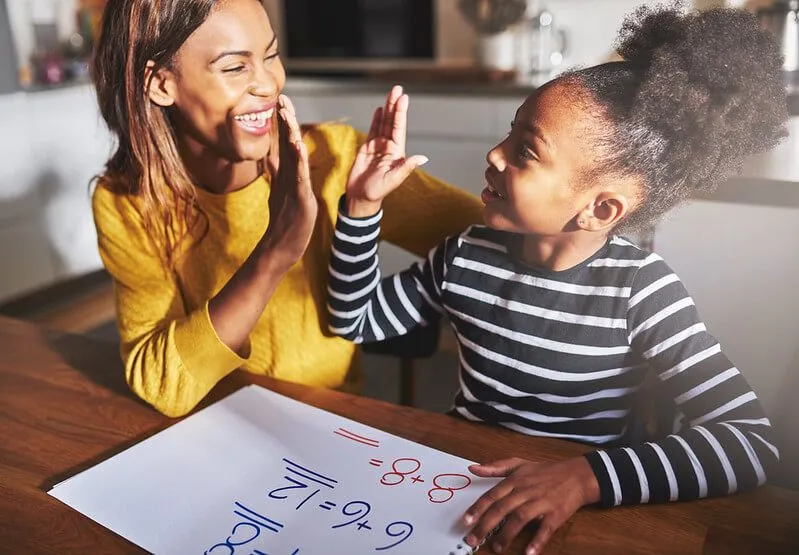FOR ALL AGES
When your children start primary school, there are two sets of standardised tests (SATs) that they will have to take before they head into Year 7.
But not to panic! Our easy to follow guide will tell you what you need to know about SATs, how you can support your kids' education in the run-up to the SATs tests, and how to interpret the results.

SAT stands for Standard Assessment Tests.
The SATs tests are designed to gauge children's academic progress by comparing their attainment with the average attainment expected of children in their age group.
The SATs tests are taken towards the end of Year 2, when your child is six or seven, and near the end of year six, when your child will be 10 or 11.
Your Key Stage 1 child will take the SATs in May when they are in Year 2. They are less formal than the Year 6 SATs tests and are set by the teacher. The tests will gauge their levels in handwriting, maths, science, writing and spelling. Because this is a teacher assessment rather than a formal test, it's likely that your child will hardly be aware that they are being tested. Your child will take Maths and English SATs papers, while Science is only teacher assessed. Some of the tests may be sent to your local education authority to be moderated. This ensures that marking is consistent between schools.

Key Stage 2 SATS are a more formal affair. Again, they are conducted in the May of Year 6. they will test your child's attainment in Maths, English and Science. This time around, your child will be far more aware that they are undergoing testing. Schools will set practice papers and your child will probably take a mock SATs test earlier in the year.
Because this is a more formal process, the tests will be marked externally, and you will receive their SATs scores via school before the end of the school year.
Continue with the learning support you offer at home. Encourage independent reading and chat about the books they are reading. Work on mental maths through play and practical tasks such as cooking. Encourage them to use the correct punctuation in writing tasks - commas, capital letters, speech marks and full stops. Help them to practise telling the time with an analogue clock, practise times tables and the other maths they have done in school.
Other than that, try to make sure they are getting plenty of fresh air, exercise and sleep.

Your child's SATs scores for KS1 are a scaled score. This means that if they are working at the expected standard they will get a scaled score of 100. If your child's SATs scaled score is above 100, it means they are working at a higher level than is expected for a child of their age. The lowest score they can achieve is 85, the highest 115.
The teacher will have used tests, classwork and their own observations to calculate the results.
If your child has a lower than average score, don't panic. Their results will highlight to the school that your child needs more support with their learning. If you are concerned, arrange to speak to the school, find out what support they are putting in place and then you can discuss any concerns.

First, talk to your Year 6 child about the SATs and any concerns they may have. They might have heard children talking in the playground, and some will have blown it up out of all proportion, so it's good to have a frank chat. Let them know that they do not have to worry about them. Try to ensure they remain relaxed about the tests, as that will help them to perform at their best.
You can help them by encouraging reading at home, discussing storylines and characters, and by playing games that help the brain keep working. Card games, Scrabble, Boggle, hangman, dominoes, Uno and Monopoly all help to develop literacy and maths skills - and keep it fun!
Your Year 6 child will probably do plenty of test papers in school, but if they would like to challenge themselves, and feel they would benefit from practising in a more relaxed and familiar environment, it is possible to buy test papers. Make sure they are in the most up to date format, which was introduced in 2016.
It is also possible to buy revision guides. Some schools provide these or arrange for a reduced rate for parents to buy, so check with the school before going out and spending your cash. However, there is probably no point in forcing them if your child is not interested - you'll end up putting them off altogether, and most schools do plenty of practice during the school day.
During SATs week, try to keep their routine as normal as possible. There's no need to curtail after-school activities and sports clubs, These are not GCSEs or A-Levels and they really shouldn't take over their life! However, if your child has SEN, gets very tired easily or struggles with anxiety, you should handle this how you think best.
Try to encourage them to get plenty of fresh air, so that they can sleep well, and avoid late nights.
Keep any talk about the tests light-hearted and positive - don't be grilling them when they come home about how they have done, even though you may be anxious! You know your Year 6 child best though - some of them will be enjoying the challenge of taking tests and the novelty of it all, while others will be finding the week a real struggle, so handle them sensitively!

The KS2 test papers in Maths and English (which includes reading and grammar, punctuation and spelling) are marked externally. In most schools, science is teacher assessed, but some schools are allocated a proper test, in order to gauge the national levels in science education.
Like the KS1 tests, there is a raw score (the actual score your child got) and the scaled score, which compares them to the national average. So again, if they get results of 100, this means they have met the expected standard for their age.
Most schools don't provide results with raw scores. Instead, you may get the scaled score and a code. Some schools provide a code only for the SATs results.
If your child receives a score, anything from 100 means they have met the expected standard. Anything below means they have not. The lowest score they can achieve is 80, the highest 120. If your child achieves a score of around 110 they would probably be considered to be working at greater depth.
You might just receive one of these codes for each subject:
AS: Expected standard achieved.
NS: Expected standard not achieved.
A: The pupil was absent for the test.
B: The pupil is working below the level assessed by KS2 SATs.
M: The pupil missed the test.
T: The pupil is working at the level of the tests but is not able to access them (this will refer to children with special needs).
If your child's SATs results are surprisingly low, you should consult with their teacher. If they have failed to make the progress they should have between KS1 and KS2 results, it should highlight whether they need extra support or whether you need to investigate if there is a learning disability present. As they move on to secondary school this can be a good thing, as the new school can quickly put in place interventions to help.
A discussion with the teacher may highlight that your child simply needs some more work on certain aspects - they may need some more spelling practice, do more reading to improve fluency or get a better grasp of times tables. In this case, you may want to consider doing some extra work at home, tutoring or a learning centre to help your child get up to speed by the time they go into Year 7.
To put your child's score into perspective, the KS2 SATs results from 2019 shows that in reading, 73% of pupils reached the expected standard in 2019, down by 2 percentage points from 2018. In Maths, 79% of pupils reached the expected standard, up by 3 percentage points from 2018. In GPS, 78% of pupils reached the expected standard, unchanged from 2018.
While secondary schools do initially use SATs scores to stream children, they also conduct their own CATs tests in Year 7, to assess children's learning potential.
Read The Disclaimer
At Kidadl we pride ourselves on offering families original ideas to make the most of time spent together at home or out and about, wherever you are in the world. We strive to recommend the very best things that are suggested by our community and are things we would do ourselves - our aim is to be the trusted friend to parents.
We try our very best, but cannot guarantee perfection. We will always aim to give you accurate information at the date of publication - however, information does change, so it’s important you do your own research, double-check and make the decision that is right for your family.
Kidadl provides inspiration to entertain and educate your children. We recognise that not all activities and ideas are appropriate and suitable for all children and families or in all circumstances. Our recommended activities are based on age but these are a guide. We recommend that these ideas are used as inspiration, that ideas are undertaken with appropriate adult supervision, and that each adult uses their own discretion and knowledge of their children to consider the safety and suitability.
Kidadl cannot accept liability for the execution of these ideas, and parental supervision is advised at all times, as safety is paramount. Anyone using the information provided by Kidadl does so at their own risk and we can not accept liability if things go wrong.
Kidadl is independent and to make our service free to you the reader we are supported by advertising.
We hope you love our recommendations for products and services! What we suggest is selected independently by the Kidadl team. If you purchase using the buy now button we may earn a small commission. This does not influence our choices. Please note: prices are correct and items are available at the time the article was published.
Kidadl has a number of affiliate partners that we work with including Amazon. Please note that Kidadl is a participant in the Amazon Services LLC Associates Program, an affiliate advertising program designed to provide a means for sites to earn advertising fees by advertising and linking to amazon.
We also link to other websites, but are not responsible for their content.
Was this article helpful?



We’ll send you tons of inspiration to help you find a hidden gem in your local area or plan a big day out.



Check your inbox for your latest news from us. You have subscribed to:
Remember that you can always manage your preferences or unsubscribe through the link at the foot of each newsletter.